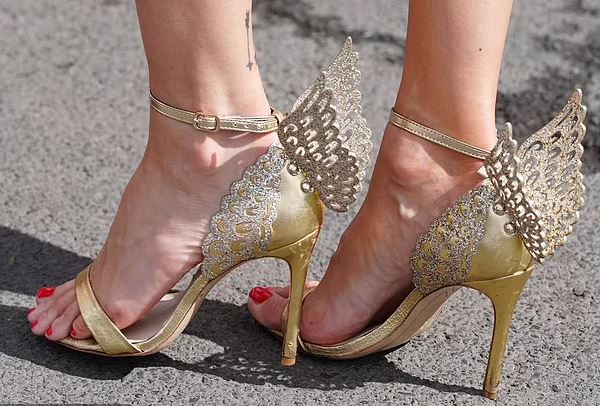Over at the DM, Tom Utley talks about table manners, and the apparent disdain with which the foul Gen Z twerps regard them.
If we’re to believe a poll out this week, however, old-fashioned table manners will soon be consigned to history. A survey of 2,000 teenagers and adults found that 60 per cent of those aged 12 to 27 — known as Generation Z — think table manners in general are no longer important.
More than three-quarters of them, finds Censuswide, say they don’t care about elbows on the table, while more than half think it doesn’t matter which way round a knife and fork are held.
I have a rather jaundiced view of the whole thing, because I’ve found that all manners — never mind just those at the table — seem to have taken flight and disappeared from modern life. And while the article is Brit-specific, it’s certainly true in the U.S. as well, and both New Wife and I continue to throw up our hands in horror when we encounter such societal contretemps.
But as for table manners: our kids (her two and my three) have all been indoctrinated in the matter, and I’m pleased to note that they’ve passed on that training to their other halves and kids.
I remember well the first time I noticed how well-mannered my kids were, several years ago. The occasion was afternoon tea in the St. James Room at Fortnum & Mason, where impeccably-dressed waiters and waitresses brought us plate upon plate of foods (sandwiches, and then scones with jams and clotted cream) and of course, pots and pots of F&M’s delicious Royal Blend tea. (It’s still the Son&Heir’s favorite, and it’s a staple birthday present choice.) Anyway, the kids showed impeccable table manners, and of course we the parents were hugely gratified that all our efforts had not been in vain, and that we were not embarrassed by any loutish and gross behavior. (The same was evident when New Wife and I were treated to afternoon tea at the Ritz by her two sons, a few years back: exquisite table manners all round.)
I have a visceral reaction to someone with terrible table manners: I finish the meal as quickly as possible, and make a point of never eating with that person ever again. When someone gobbles down their food like a baboon, and speaks with a mouth full of food, I actually feel nauseated and try not to look at them at all.
I’m somewhat indifferent to the American style of eating, whereby one cuts the food into small pieces and then transfers the fork to the right hand to spear it. (It’s the way children eat their food, back where I come from, but it’s a method that is firmly discouraged once they reach the age of seven or eight and have developed the dexterity to eat properly, i.e. with the fork in the left hand and the knife in the right.)
Living here in Murka, I’ve always been keenly aware that I’m the “guest”, so to speak, and that if that’s the cultural norm, then manners preclude me trying to change it in others. That doesn’t mean that I’ve changed my eating style, of course, and when American table companions point out my “British” style of knife-and-fork usage, I just shrug and say, “South Africa was still a British colony when I was born, and that’s one of the little legacies thereof.” To change the way I eat is unthinkable.
The whole point of good table manners is respect for the feelings of others — hell, that’s the point of good manners in toto, and not just at the table; and I find it amusing that in these times, when everyone has to tiptoe around the feelings of others so circumspectly, that the most important of these is no longer de rigueur.
Anyway, I’m just glad that I’m unlikely to be exposed to the boorish table manners of the child-like Gen Z people, because to be honest, I have no interest in any kind of intercourse with them at all, let alone at the table. And if exposed to them in public (e.g. in a restaurant), I’ll just put on metaphorical blinkers and try to ignore them — unless it all gets too much, and I’ll flay them with scorn and contempt, loudly if in the mood.
As Gen Z seems to be, as a whole, a bunch of tender snowflakes, I don’t think I’ll be in any danger.












































